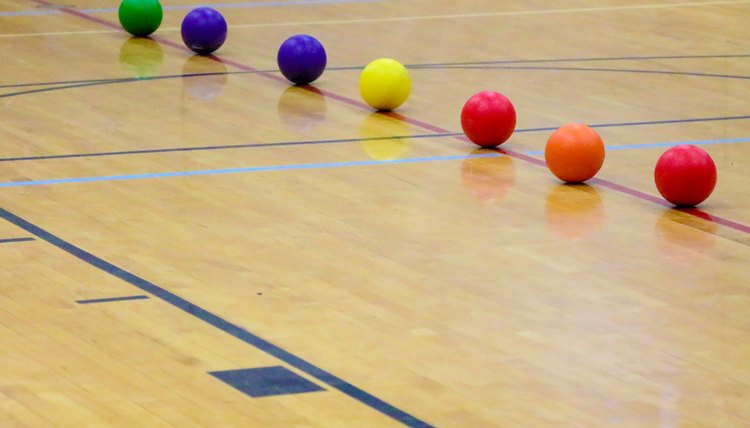Physical Benefits of Dodgeball

Dodgeball is an increasingly controversial sport, with many schools banning it due to concerns about injury and bullying. The Texas Association for Health, Physical Education, Recreation and Dance argues that dodgeball is not appropriate when children are forced to play the sport or when they spend long periods of time sitting -- such as when ball throwers wait their turn to throw, or when ball dodgers are hit and must leave the field. The National Association for Sport and Physical Education argues that the sport is not appropriate for children at all. Adults who play the game safely can, however, gain important health benefits.
Aerobic Exercise
A regulation-sized dodgeball court is 60 feet long, forcing players to sprint across the court to avoid being hit by a ball and taken out of the game. This burst of running can improve cardiovascular health by lowering blood pressure and pulse, improving circulation and burning calories. Dodgeball can also constitute a form of interval training, with players running for brief periods of time. According to "High Intensity Interval Training," running intervals can offer a temporary boost to the metabolism while improving muscle strength and coordination.
Agility and Balance
Players running across a court don't just run; they also have to dodge balls. This can improve agility as players adjust their bodies at a rapid pace. It can also help players improve their balance. Successful players don't slip when they see a ball coming their way, and they learn to maintain an upright posture that reduces their risk of falling.
Strength Training
A standard dodgeball court is 30 feet across, and players must throw large balls a moderate distance to successfully hit members of the other team. This requires strength in the shoulders, back, abs and arms, and repeatedly throwing the ball can help build muscle endurance. According to the U.S. Centers for Disease Control and Prevention, regular muscle-building exercise can decrease the risk of diseases such as osteoporosis and osteoarthritis.
Hand-Eye Coordination
Both ball dodgers and ball throwers have to have good hand-eye coordination. To successfully hit other players, throwers need to coordinate their throws not only with the other players' current location, but also with their anticipated location when the ball lands. Runners have to keep abreast of the current location of the ball, adjusting their location accordingly.
References
Writer Bio
Van Thompson is an attorney and writer. A former martial arts instructor, he holds bachelor's degrees in music and computer science from Westchester University, and a juris doctor from Georgia State University. He is the recipient of numerous writing awards, including a 2009 CALI Legal Writing Award.
